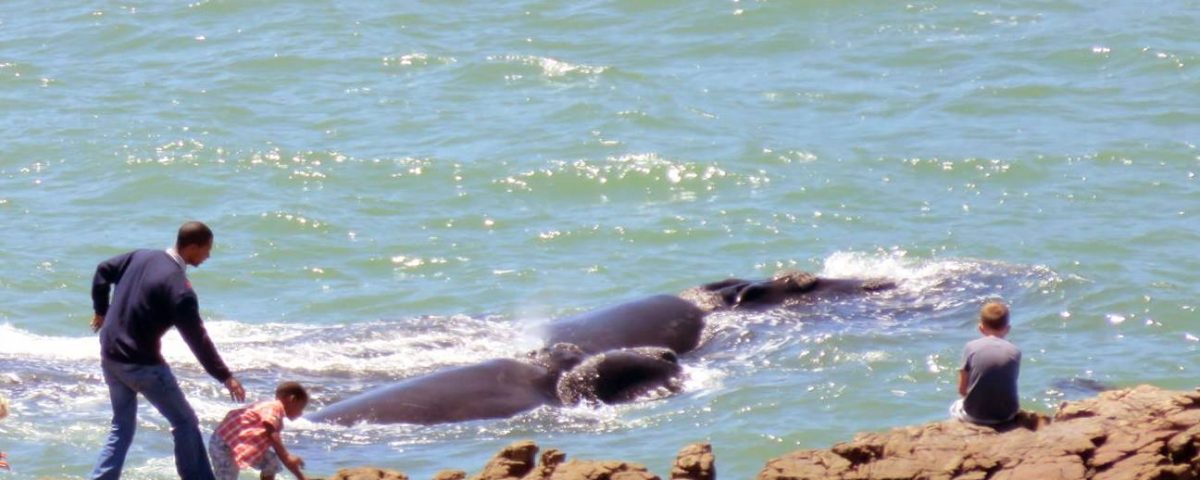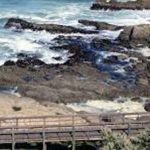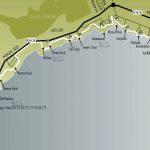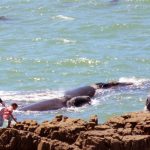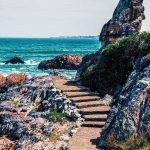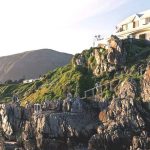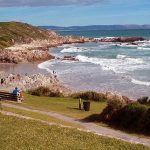For tourists, the Cliff Path is another of the town’s attractions, to be enjoyed without needing to consider how it got there. For residents, a walk along it is a soothing and restful experience, away from the day’s cares. For the historian it speaks of 58 years of events that started positively, went through a period during which the path was almost lost, but having a good ending in which it has become the second most popular feature for tourists. Only the whales themselves attract more tourists and they would not be seen so close up if the was no Cliff Path.
The Cliff Path itself dates from 1960. But, since at least the last years of the 19th century there were a myriad of narrow paths leading from the Main Road to fishing spots along the cliffs. These paths were made by fishermen looking for the most direct way to get to the spot they preferred. To get from one fishing spot to another you had to retrace your steps to the road and walk along it until you found another path leading to the cliffs.
The idea of a path running parallel to the cliffs, cutting across and linking all the existing paths came to Eric Jones in 1960. Jones was British in origin, but spent time in Hermanus during WWII. He returned after the war, worked for Westcott’s mineral Works, and developed a small nursery business near Eastcliff Motors between Main Road and Mitchell Street.
In 1960, Jones put the idea to the newly-formed Hermanus Botanical Society which accepted it at once. They also acted on it. Without assistance from the Municipality they started clearing the path. Any finance needed was privately donated through the Society which also employed labourers to assist the two members most involved, Dr Ion Williams and Eric Jones.
The Path was completed in five years and maintained for many years afterwards by the Botanical Society. However, the Municipality eventually had to take it over as a municipal asset. Regrettably, the Path was not publicised as a tourist destination and not well-maintained during the 1980s and 1990s.
Enter David Beattie (1941-2018). He remembered the Path from holidays in Hermanus as a boy and when he retired to the town in 2000 he was disappointed to see the run-down path that then existed. In 2002, he formed the Cliff Path Management Group (CPMG) composed of committed volunteers with the aim of restoring the condition of the path, extending it to cover the full distance between the “Lagoon” in the east and the New Harbour in the west, improving signage for users and (later) providing surfaces that were suitable for wheelchairs.
To achieve this he personally raised over R3 million in private donations and was also able to persuade the Municipality to take much greater interest in and responsibility for the path. He also played a role in incorporating the path into the Fernkloof Nature Reserve, giving it much improved legal status.
In 2018, David and I researched the origins of all the popular names given to spots along the Cliff Path, some 36 in all. We have been able to explain 34 of these and the explanations were published in the Village News. I intend to continue this work and publish a brochure for tourists (and interested residents) early in 2019. Here’s an example: the spot nearest the New Harbour is known (in English) as “Skotsmans Rock”. The name originates from the fact that since it opened, the New Harbour has charged an admission fee. However, if you stand on the rocks at Skotsmans Rock you can look over the harbour wall and see what’s going on for free.

